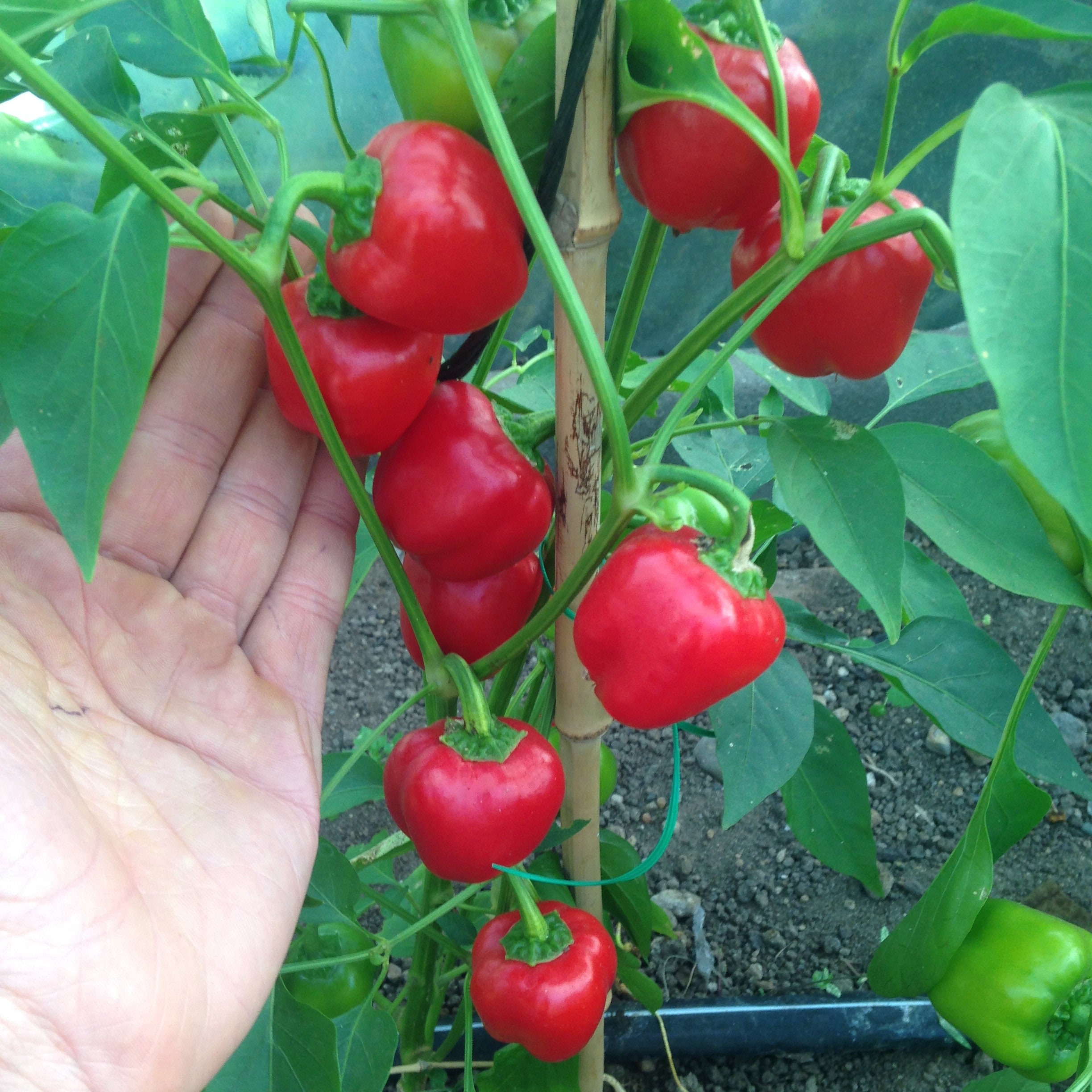Prepare to be captivated as we delve into the realm of the mini bell pepper plant, a horticultural wonder that boasts unique growth habits, vibrant colors, and a delectable taste. Its compact size and adaptability make it a charming addition to any garden or kitchen, offering culinary versatility and nutritional richness.
This extraordinary plant exhibits a bushy growth habit, reaching a height of approximately 12 to 18 inches. Its leaves, adorned with a deep green hue, possess a smooth texture and serrated edges, adding to its visual appeal. The intricate root system, composed of shallow and fibrous roots, anchors the plant securely and facilitates efficient nutrient uptake.
Plant Characteristics: Mini Bell Pepper Plant

Mini bell pepper plants, known for their compact size and prolific fruit production, exhibit unique growth habits and distinct morphological features. These plants typically grow to a height of 12-18 inches, with a bushy and upright growth pattern. Their stems are sturdy and branched, providing support to the plant and its developing fruits.
Leaf Characteristics
The leaves of mini bell pepper plants are ovate to lanceolate in shape, with serrated margins and a smooth texture. They are arranged alternately along the stems and range in color from light to dark green. The leaves play a crucial role in photosynthesis, capturing sunlight to produce energy for plant growth and fruit development.
Root System
Mini bell pepper plants possess a fibrous root system composed of a network of fine, branching roots. This extensive root system provides anchorage for the plant, absorbing water and nutrients from the soil. The root system’s efficiency in nutrient uptake contributes to the plant’s overall health and productivity.
Growing Conditions

Mini bell pepper plants thrive in well-drained soil with a pH between 6.0 and 6.8. They require plenty of sunlight, at least 6 hours per day, and prefer temperatures between 70 and 85°F (21-29°C).
Soil Conditions
Mini bell pepper plants prefer well-drained soil that is rich in organic matter. The soil should have a pH between 6.0 and 6.8. If the soil is too acidic, you can add lime to raise the pH. If the soil is too alkaline, you can add sulfur to lower the pH.
Temperature
Mini bell pepper plants grow best in temperatures between 70 and 85°F (21-29°C). They can tolerate temperatures as low as 60°F (16°C) and as high as 90°F (32°C), but they will not produce as many peppers if the temperatures are too extreme.
Light
Mini bell pepper plants need at least 6 hours of sunlight per day to produce fruit. They can tolerate partial shade, but they will not produce as many peppers if they do not get enough sunlight.
Watering
Mini bell pepper plants should be watered regularly, but they should not be overwatered. The soil should be moist but not soggy. You can check the soil moisture by sticking your finger in the soil. If the soil is dry up to your first knuckle, it is time to water the plant.
Fertilizer
Mini bell pepper plants should be fertilized every 2-3 weeks with a balanced fertilizer. You can use a fertilizer that is specifically designed for vegetables.
Harvesting and Uses

Mini bell peppers, known for their vibrant colors and sweet, crisp texture, are ready to harvest approximately 60-70 days after transplanting.
To determine ripeness, gently squeeze the peppers; ripe fruits will feel slightly firm but give slightly to the touch. Their skin should be smooth, glossy, and free of blemishes or bruises. Avoid harvesting overripe peppers, as they tend to be softer and may have a diminished flavor.
Culinary Uses
Mini bell peppers are versatile culinary ingredients, adding vibrant colors and a sweet, crisp crunch to various dishes. They can be enjoyed raw, sliced into salads, or added to sandwiches, wraps, and crudités platters.
Their versatility extends to cooked dishes; they can be roasted, grilled, or sautéed, enhancing the flavors of stir-fries, pasta sauces, and casseroles. Mini bell peppers also make excellent stuffed appetizers, filled with savory mixtures of rice, vegetables, or cheese.
Beyond their culinary appeal, mini bell peppers are also a nutritious addition to any diet. They are rich in vitamins A and C, antioxidants, and dietary fiber.
Storage Methods, Mini bell pepper plant
To maintain freshness and extend the shelf life of mini bell peppers, proper storage is crucial. Store them unwashed in a slightly humid environment, such as a perforated plastic bag or container in the refrigerator. Avoid storing them near ethylene-producing fruits like apples or bananas, as this can accelerate ripening and spoilage.
Under optimal storage conditions, mini bell peppers can remain fresh for up to 2-3 weeks. Regularly check for any signs of spoilage or decay and discard any affected peppers promptly.